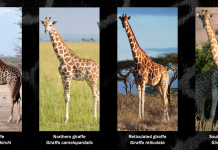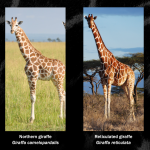WINDHOEK, Namibia, Aug 21 (Swara) – Giraffes, long thought to be a single species, have been formally recognised as four genetically distinct species in a landmark ruling by the International Union for Conservation of Nature (IUCN), a decision expected to reshape global conservation efforts.
The IUCN’s Species Survival Commission confirmed the reclassification following more than a decade of research led by Germany’s Senckenberg Biodiversity and Climate Research Centre and the Namibia-based Giraffe Conservation Foundation (GCF).
“This recognition is more than symbolic. Each giraffe species faces different threats, and now we can tailor conservation strategies to meet their specific needs,” said Dr. Julian Fennessy, GCF’s co-founder.
The newly recognised species are the Masai, northern, reticulated, and southern giraffe. Although visually similar, genetic studies show divergences as profound as those separating polar and brown bears.
Field research and genome analysis, combined with recent skull morphology studies, confirmed the findings, overturning a taxonomy that had grouped giraffes as a single species since 1758.
“To describe four new large mammal species after more than 250 years is extraordinary,” said Prof. Axel Janke of Senckenberg.
The IUCN will now assess each species separately for its Red List of threatened species. Preliminary results suggest three of the four may qualify as endangered due to sharp population declines and habitat loss.
“What a tragedy it would be to lose a species we’ve only just discovered,” said GCF Executive Director Stephanie Fennessy.
























